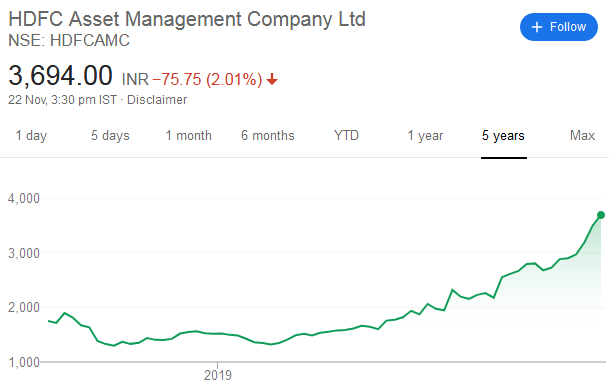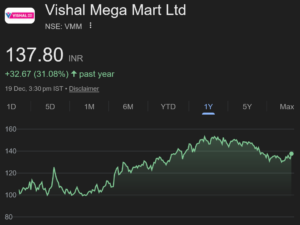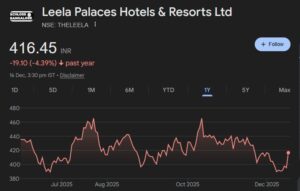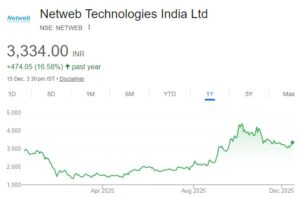
India is en-route to becoming a $5 Trillion economy: Billionaire Bill Gates
Atul Suri was amongst the few who believed NAMO when he made the solemn promise that he will transform India into a powerhouse with an economy of $5 Trillion.
“The kind of statements you hear in the Prime Minister’s speech to the corporate bigwigs in the US in the last couple of days … you have to believe that this government has got its mind set on that $5 trillion number,” he stated.
Atul Suri also warned NAMO’s detractors to stay away from him and not to “fight” or “mess around” when he is doing his job of improving the economy.
Now, the $5 Trillion theory is endorsed by none other than Bill Gates, the mega Billionaire and World’s richest man.
“Clearly India will reach $5 trillion economy either in 2024 or later,” Bill Gates said with a confident smile on his face.
WORLD #EXCLUSIVE | Clearly India will reach $5 trillion economy either in 2024 or later: @BillGates, Philanthropist & @Microsoft co-founder tells Rahul Shivshankar on INDIA UPFRONT. | #BillGatesBacksRisingIndiahttps://t.co/YwECz0zJBo pic.twitter.com/QycDRK4j81
— TIMES NOW (@TimesNow) November 18, 2019
Obviously, nobody dares to question Bill Gates’ assertion given his stature as a visionary.
It is notable that Bill Gates is a big fan of NAMO.
He has complimented NAMO for the progress India has made in providing safe sanitation under his leadership.
A similar compliment has been given by Billionaire Ray Dalio, the astute stock picker and founder of Bridgewater Associates, the World’s largest Hedge Fund.
“In my opinion, Indian’s Prime Minister Modi is one of the best, if not the best, leaders in the world,” the Billionaire gushed in unabashed admiration.

(Billionaire Bill Gates with NAMO)
Ignore Doubting Thomases, Nifty is heading to 13,500
The super-surge in the Sensex is not palatable to everyone.
Some are expressing doubts about its sustainability given the alleged slowdown and other ailments in the economy.
In fact, when the Sensex breached the historical level of 40,000, a junkyard politician blasphemously described it as “NonSensex”.
Sensex crosses 40 K.
It should be called NonSensex. pic.twitter.com/DB5n0EMVmO
— Sanjay Jha (@JhaSanjay) November 1, 2019
However, when the same Sensex had plunged on an earlier occasion, another had declared that it reflects a “No confidence motion” on the Govt.
"No confidence motion" by Sensex on PM Modi's #Budget2018: Rahul Gandhi https://t.co/bjoO2ZuCQh pic.twitter.com/D8szhg1NVd
— NDTV (@ndtv) February 2, 2018
It is obvious that politicians are indulging in buffoonery and have zero credibility.
Atul Suri made it clear that there is no reason for us to worry about the alleged slowdown etc.
“Forget doom-sayers, a broad-based equity bull market is playing out globally,” he declared in an authoritative tone.
He pointed out that the MSCI All-World index is the “mother index” of the whole world, and comprises of Country Indices such as the Dow, Nasdaq, Nikki etc.
This All-World index is now breaking out, which implies that the entire World is in a Bull Market.
“I personally see a 20% upside in the US markets from here,” he said confidently.
Atul Suri also provided a complex explanation about how the “negative interest rates” and “inverted yield curve” will cause funds to gush into the Emerging Markets and especially India.
“The big trigger for global markets will be a muted or a range-bound US bond market. If that remains, what will happen is that there is a very big TINA (there is no alternative) factor which is also happening out in India,” he stated.
“Going ahead in 2020, we will have a good market thanks to the global bull run in spite of all negative headline news. But for us to turn from good to great is going to be a function of what happens in Indian markets and 2020 is going to be very exciting,” he added.
Markets always climb the wall of worry and come down the ray of hope: Rakesh Jhunjhunwala
One of Rakesh Jhunjhunwala‘s most memorable utterances is that markets always climb the wall of worry.
Atul Suri, who learnt the nuances of trading and investing from Rakesh Jhunjhunwala, advised us to always keep this credo in mind.
What the credo means is that the right time for investment is when there is a “wall of worry” and pessimism is at the highest.
Atul Suri explained that despite the overwhelmingly negative headline news, the stock markets will do well in 2020.
However, if there is good news in the Budget such as divestments, direct taxes or just general economic improvement, the markets will take off like a rocket.
Be a trend follower. Don’t jump off horses which are running fast
Atul Suri acknowledged the on-going raging debate amongst the intellectuals of Dalal Street on whether there is a “bubble” in valuations of top-quality stocks.
He explained that he is not in favour of changing course only on the ground of alleged over-valuation.
“Jumping of the horses is intellectually a great concept but I am a trend investor and investing styles are not an intellectual function. It is a function of risk return profile,” he said.
He also pointed out that trend investors do not believe in being the first to buy a stock or buying a stock at the bottom.
“If a stock goes from 100 to 1000, it is not that I have to buy it at 100. I can buy it at 200 and 300, The more important part is my ability to ride the trend,” he explained.
“I know there is this talk that there is a bubble in some space and some spaces are cheap, but the fact is when the market or earnings change, I may be not being buying at the bottom. I may buy it a little late but it is okay because that suits my risk return profile. As an investor you have to allow your thought process to evolve,” he added.
Even classic compounder stocks fall heavily in the short-term
Atul Suri opined that the fact that Eicher Motors, a classic blue-chip compounder stocks, has lost a massive 40% does not mean that there is/ was a “bubble” in its valuations.
He pointed out that even HDFC Bank, which is regarded as the “smoothest stock” in Indian markets today, shows 20-30% volatility.
“A bank that is growing at 20-25% year-on-year with no blemishes, how can the stock fall 20-30%?,” he asked, implying that there is nothing unnatural in blue-chips exhibiting such volatility.
“I would like a portfolio that doubles, goes up 100% every year but the fact is if I look for a stock or a portfolio that goes up 100% every year, can I withstand a 50% drawdown because risk and reward go hand in hand? As an investor, it is important for you to be able to define what is your area which fits into your psyche,” he stated.
Banking stocks were the ‘TINA’ earlier ….
Atul Suri pointed that banking stocks were hitherto the ‘TINA’ (‘There Is No Alternative’) stocks and this enabled them to deliver massive gains to investors.
The TINA status arose due to the NBFC crises which forced investors to dump NBFC stocks and embrace private bank stocks.
In fact, since inception from 2000, the Bank Nifty has returned nearly 4.07 times more than Nifty.
Since inception from 2000, the #BankNifty has returned nearly 4.07 times more than #Nifty.
While #BankNIFTY has gained 2581.47%, #NIFTY has gained 638.68% over its lifetime from the time it was introduced.#investing #trading pic.twitter.com/1kZxhrdhln
— Milan Vaishnav, CMT, MSTA (@Milan_Vaishnav) November 5, 2019
… Insurance & AMC stocks are the new ‘TINA’ stocks
AMC and Insurance stocks are now preparing to take over the mantle from private bank stocks.
“You are seeing a very big trend play out in insurance and in AMCs. It has all the makings of a very large trend,” Suri opined.
How to identify ‘TINA’ stocks?
Atul Suri provided an easy guide to help us to identify these stocks.
Stocks have to exhibit four characteristics to qualify as a ‘TINA’ stock:
First, there should be a sense of newness to the sector.
The AMC and Insurance sector stocks were not listed three-five years ago and so qualify.
Second, analysts should be able to spin a very big story about the stocks and how they will impact the whole Indian demographic story.
Third, the stocks should have solid earnings, or exhibit the potential for solid earnings.
Fourth, there should be under-ownership of the stocks by institutional investors.
Insurance & AMC stocks are at record highs
Prima facie, there is merit in Atul Suri’s analysis because it is a fact that insurance stocks like ICICI Prudential Life, HDFC Life, ICICI Lombard General Insurance and SBI Life have scaled their record high levels.
According to Shyamsunder Bhat, an expert, insurance stocks are popular because, unlike NBFCs or banks, the insurance sector does not have NPA, liquidity or solvency issues.
Also, the insurers are well-capitalised and with reasonably comfortable solvency ratios.
“This is one of the reasons we have seen investors come to the insurance sector. Investors are appreciating the value that this sector offers, which is what is reflected in these multiples,” he opined.
The same is true of the AMC (Asset Management Space) stocks like HDFC AMC and Reliance Nippon.
Both stocks are coasting at record highs.
Also, MSCI, the world’s biggest index compiler, has added HDFC Asset Management, ICICI Prudential Life and SBI Life to its India index, which means that Funds have no option but to grab these stocks irrespective of valuations.
Is AB Capital a good buy now?
Old timers may recollect that AB Capital, alias Aditya Birla Capital, was first recommended to us by Ajay Srivastava of Dimensions Consulting at the time of its listing in September 2017.
He pointed out that AB Capital is a conglomerate of financial services such as the NBFC, Insurance, Mutual Fund etc and has a footprint bigger than that of its arch rivals Bajaj Finserv and Bajaj Finance put together.
“It is a wonderful and a brilliant combination of businesses in that company. It is very focussed with decent growth rate and quality management. It is a kind of a stock which you must hold because this tells the story of India,” he had then opined.
Unfortunately, the recommendation was given at an inauspicious time.
The onset of the Bear market coupled with other factors caused the stock to sink like a stone.
However, the fortunes of the stock are now on the ascent and the time is ripe to look at it again, according to experts.
Rakesh Bansal, an expert, has opined that the stock has bottomed out and has a good risk-reward profile. It is also quoting at a rock-bottom P/E of 20x compared to the stratospheric valuations of its peers!
https://t.co/hW6NMAhrgf pic.twitter.com/R0rox9vdR7
— Rakesh Bansal (@iamrakeshbansal) November 20, 2019









Not able to understand how a post on TINA factor ends up with a strong recommendation of AB Capital Ltd. Nothing wrong with AB Capital but to club this great financial power house with a captioned post on TINA factor is some what misleading.
If author had some different idea, please elaborate.
GDP growing at 4.2%. Minus the 2.5% fake GDP numbers (the defacto rule now) and then we are growing at a mind boggling, mind blasting 1.7% rate. Thats the power of our fraud tughlaq who killed the economy with his harebrained idea of demonetisation. Even after fudging the numbers he cant match the worst performance delivered by the MMS govt during 2012-14. Now, try imagining the fraud master trying to achieve the 8%+ achieved by MMS govt.
At this growth rate, we will double our current $2 trillion economy to $4 trillion in another 35 years.
ab capital vs other power house giants like hdfc, icici, kotak have a long way to go. Many more in between them in the while.